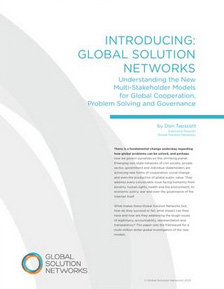The New York Times reported earlier this week that Britain’s largest software maker, Autonomy, is releasing a new software package to help doctors make diagnoses. The software is called Autonomy Auminence. It culls data from patient records, physician notes, lab reports and medical literature. It then gives the physician a “dashboard” with a checklist of diagnoses to consider, ranked by probability, according to the inferences made by Autonomy’s software. The checklist can be delivered to personal computer, iPad or other device.
“Our technology lets you go beyond structured data to capture more of the background, contextual information to make better decisions,” Michael Lynch, Autonomy’s chief executive, told the Times.
With a few modifications, Macrowikinomics readers will recognize the Autonomy software’s resemblance to the innovation we called for in health care. In our vision of a collaborative health care world, everyone should have their own online Personal Health Page. Much of the content would be similar to the Autonomy “dashboard” concept. However, instead of the information being the property of the doctor, it would be owned by the patient.
Your Personal Health Page would be your own record of the health-related information filed by the different places from which you’ve received healthcare services, such as clinics, hospitals and diagnostic labs. This information would remain secure and confidential. You would determine how and when other people, such as medical personnel, pharmacists, and insurers could access the information. For example, you might allow researchers to access your information only after it has been stripped of any personally identifying data.
More than just a private medical record, your Personal Health Page would help you reach out to other organizations such as Weight Watchers or a local health club that could contribute to your well-being. Imagine that you log onto your PHP and the first thing is a news feed giving you updates from others in your community that share a common illness, or from your medical professionals with the latest information about a new medical discovery. You are able to create communities or join medical “causes” much like with a generic social network.
Scheduling tools would help you plan a visit to your family doctor and your doctor could request information from you about how a certain treatment is working. The possibilities are almost limitless. Giving patients access to personal health records gives them the opportunity to identify and update missing or incorrect information. With its ability to aggregate patient medical information across providers, the Personal Health Page could also help provide the holistic view of a patient’s medical history that would help reduce healthcare errors.





